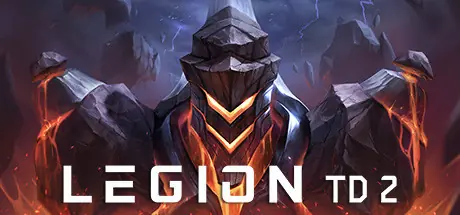Legion TD 2 Review (PC): Another Warcraft 3 legacy just about endures
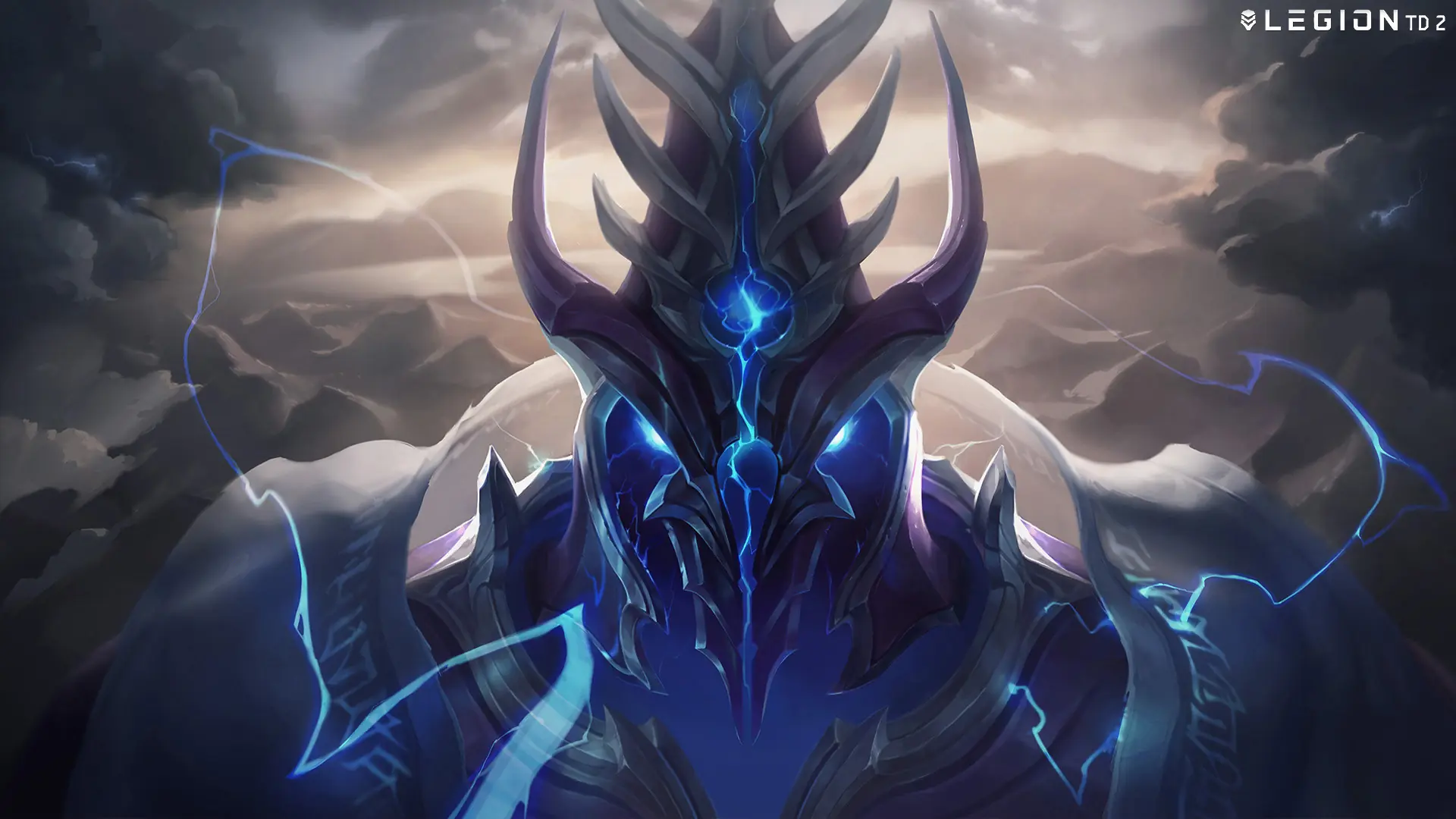
Legion TD 2, aside from being the focus of this review, is also another returning game from the glory days of Warcraft 3 custom game modes.
Legion TD 2 is described by the devs as “An infinitely replayable multiplayer and single-player tower defence”, where you will “defend against waves of enemies and destroy the enemy’s king before they can destroy yours.”
A brief bit of history
Legion TD, among others such as Footman Frenzy, the original DOTA and many more, was a very popular custom game for Warcraft 3, and the success of the multiplayer custom game lobbies in Warcraft 3 was significant enough to retain enough players to still find custom lobbies for most popular modes from the 2002 original release date, all the way up to the reforged edition release date in 2020.
Legion TD 2, the game I’ll be reviewing here, is a (seemingly fairly successful) attempt to revive another of those games from the Warcraft 3 days, this time as a standalone experience, much like the MOBA Genre of League of Legends and DOTA 2, with its origins in the custom game DOTA.
Tower Defense, Auto Chess, what does it all mean anyway?
If you’re wondering how this game is different from say, the somewhat recent Auto-Chess style games such as Teamfight tactics or DOTA Underlords, you can be forgiven for the confusion. As these games are basically all somehow descended from Warcraft 3, they all have roots in the real-time strategy (RTS) genre and thus share a fair number of details between them.
The key difference between tower defence and indeed Legion TD 2 when compared to Auto-Chess is that while you hire units in a similar fashion, in Auto-Chess additional copies of a unit will combine to upgrade it, and you’ll battle other players each round with their forces. On the tower defence side of things, you’ll mostly, if not exclusively, be battling increasingly deadly hordes of AI-controlled monsters, and your opponents will be fighting more or less identical waves at the same time that you do. Your goal is to outlast or otherwise sabotage your enemy into losing first, rather than beating them with your army directly.
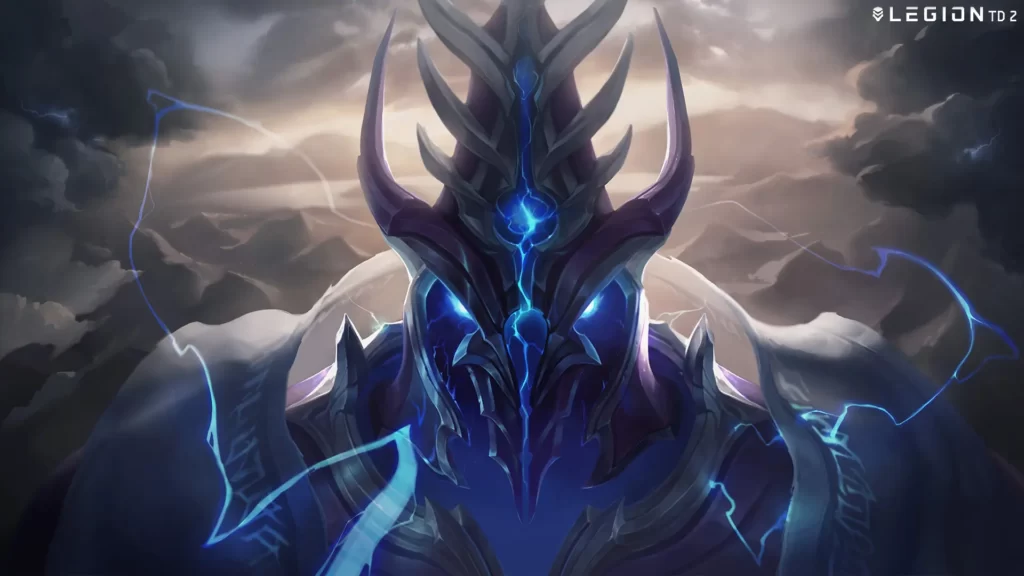
Unlike traditional tower defence games, Legion TD 2 “towers” are not fixed in place – they’re more like a typical RTS unit, in that they’ll come alive, run at enemies and fight on their own during rounds. They must still be placed on to the board somewhere much like traditional tower defences, and their precise positioning will matter later on when you play more difficult matches – but for the early waves and games that end quickly, positioning matters a fair bit less, which makes it slightly more forgiving than a traditional TD in at least one aspect.
The bit where I actually review Legion TD 2
Now that we’ve talked more than briefly about precisely what the game is, let’s move on to the actual subject of any game review, whether or not the game, in this case, Legion TD 2, is worth the asking price – or even worth buying at all.
As you might be able to tell from the nature of the game as described, it’s a bit of a curious one to place. It does feature the ability to play a campaign versus pre-determined AI with preferences for certain styles and units, which gives you a sort of flavour test against AI that more closely resembles players who enjoy specific playstyles. It also has the ability to fight various levels of AI-based on matchmaking ranks, which can let you get some practice before diving straight into the PvP – or you can do that instead immediately, your choice.
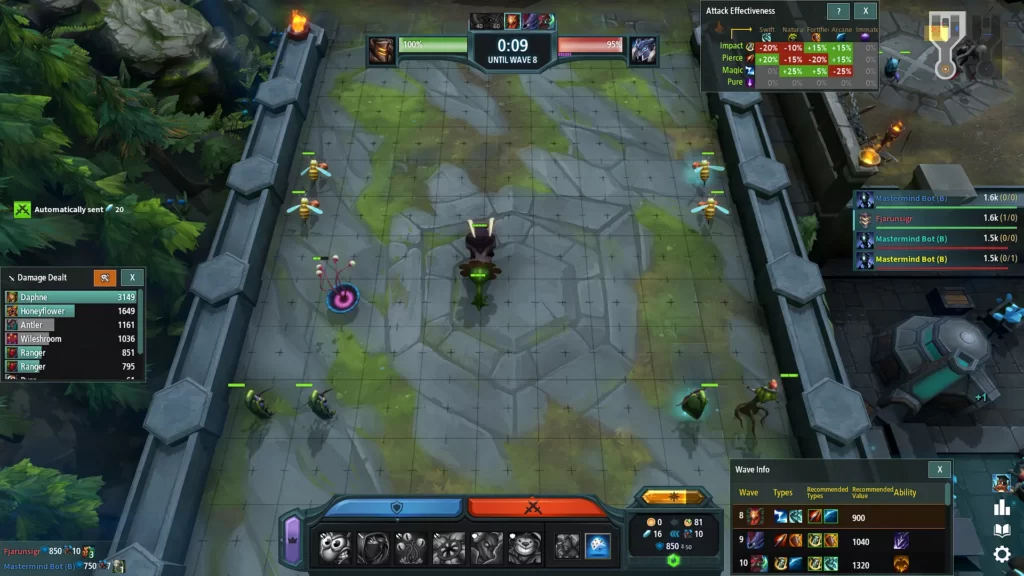
The potential problem with the PvP aspect is that in games featuring both PvE and PvP, the latter will tend to draw the most focus from developers, as it’s typically the key to the longevity of a game of this style – players will ultimately get bored of AI opponents sooner or later, but versus players is far more varied and negates that issue quite well.
At the same time, a genre that consists of strategically defending against hordes of enemies and seeing who can outlast other players to take the victory can still appeal to those who don’t typically like PvP games – but this can be, and in this case is, a double-edged sword. These players aren’t likely to be as interested in winning the game immediately and thus probably won’t focus as much on optimal strategies as they’re just trying to learn how to play in the first place and enjoy themselves, as opposed to ending matches as fast as they can. And as anyone who has ever played a game that has you be reliant on teammates before – such as MOBA games like League of Legends – when a team doesn’t agree on what to do to win and the game has a team chat available, there will be toxicity.

Whether that ends up being an issue is ultimately up to you individually. Many online gamers are pretty much used to it at this stage, sadly enough. On the upside, the game does feature a fairly comprehensive raft of options in its settings menu, allowing you to tweak your chat to a level that that doesn’t get a chance to bother you in the first place – this is about as far as I’d expect a dev to be able to take it to fix team-based toxicity as an issue, as otherwise, the chat feature has to be sacrificed by and large for everyone, handicapping matchmade teams against premade ones – a fairly significant balance issue already, and not one that should be made worse if avoidable.
These are both still problems with the game, although perhaps expected ones, given the nature of online team-based games.
READ MORE: Unpacking Review (PC): Zen Boxing
I will however just stress that the game can be played in co-op with your friends in the campaigns, and in the mode versus varying levels of AI. You do not have to go against players if you expect it to be tedious or stressful for you.
To circle back to that comprehensive raft of options in the settings menu I mentioned, the controls can be rebound pretty much entirely, sound settings feature the option to turn off the repetitive insufficient resource notification, adjust volume across the board, the interface screen features a wide number of customisations. Hell, the main menu even has Twitch Stream integrations – all things said and done about it, the game client/menu is a well put together bit of software, and it’d be nice to see more game devs put that level of work and support into their own games menus and settings.
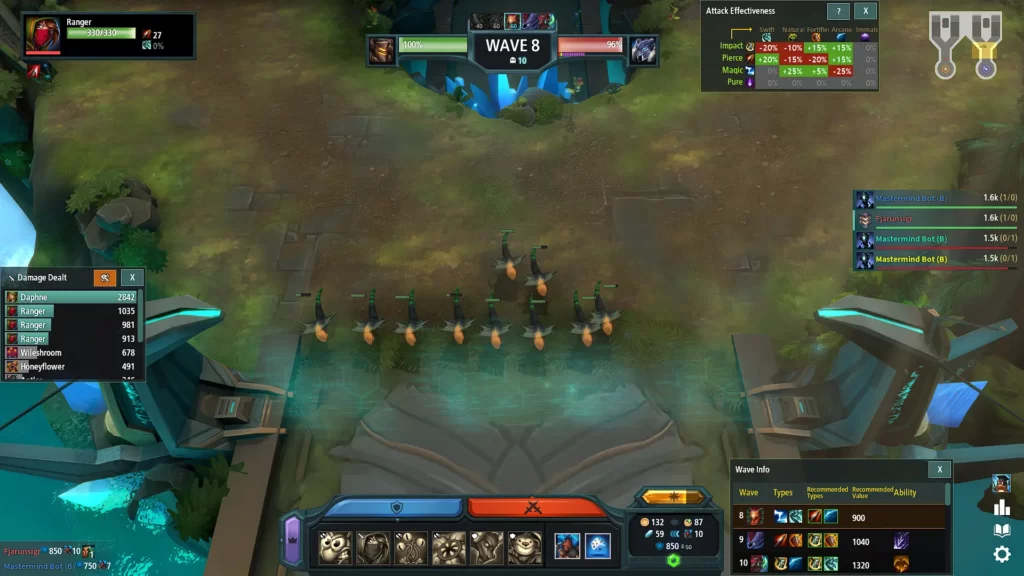
You may notice that I’ve been talking a lot about the bits that surround the gameplay, and not so much about the gameplay itself – and there is something of a reason for that. Being the type of game that it is, each match will have a certain flow to it.
You’ll always be attacked by the same enemies on wave 1, wave 2, wave 3 and so on – the only attack variety you’ll encounter will be depending on what mercenaries your opponents hire to attempt to sabotage you, and the same applies in reverse for them. Fortunately, the game doesn’t require you to directly balance offence and defence on a single budget, you’re given two resources for that purpose. The first, Gold, is what you’ll use to be buying your own units, upgrades and workers. The second, Mythium, is spent exclusively on Mercenaries or consumed by researching upgrades to your team’s king. Spending Mythium also has the side effect of giving you passive gold income, thus encouraging you to stay on top of hiring workers to increase Mythium income, and thus future gold, whenever you are capable of clearing waves with gold to spare.
Both upgrading the king and buying mercenaries reward the same rate of income per Mythium spent, so you don’t have to worry about defence upgrades potentially hobbling you later on, or the like.
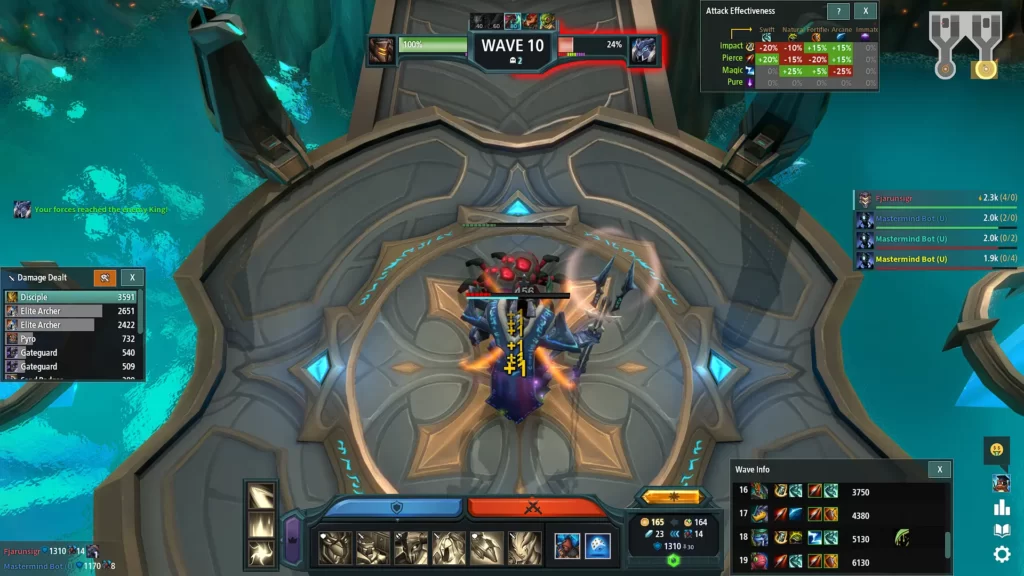
This does create a nice bit of interplay where you have to prioritise preparing your king for a bad wave long term or trying to force a bad wave on the opponent by hiring additional attackers to throw them off their game and potentially get some extra one-off gold from damaging the enemy king to boost your own side of the map, but this part of the game is where all of the variance comes from. The waves will always be the same outside of those hired soldiers.
The visuals for the map and overall appearance of the game are fairly impressive which helps to sell the title, but this advantage is also somewhat wasted by some of the units being odd designs or in some cases outright ugly. There is likely intent here, trying to retain similarity to the original game mode, though in some cases this results in outright recognisable discount versions of WC3 units, such as the mercenary shown below being extremely similar to a Kodo Beast.
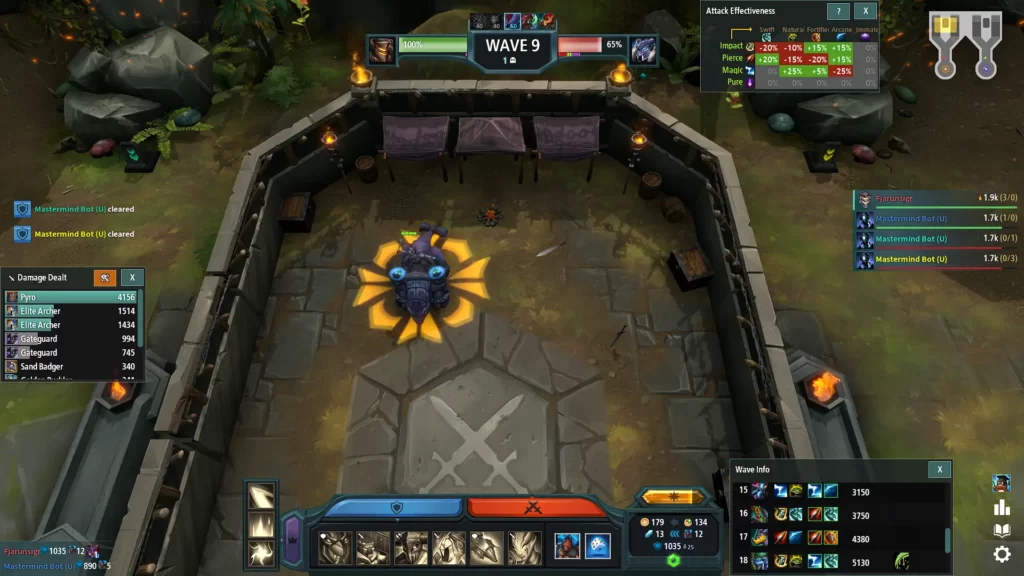
As you’ll spend much of the game monitoring those units, it does feel like they could have had a higher visual design priority and been a tad more unique. Similarly, with sound, the end product is suitable and doesn’t actively harm the game, – the backing menu track is quite nice, for example – but unit voiceovers seem to have been skipped out on in favour of retaining similarity to the original, which, as a reminder, is a Warcraft 3 custom game.
Love or hate Warcraft 3, it is still a 2002 title, which is a fair bit out of date at this stage. Even if WC3 did have an excellent variety of lines and was packed with easter egg voice lines on each unit for the time, that part has not carried over to Legion TD 2, with each unit only really around two often non-sensical sounds. Similarity with WC3 may once again have been the priority, with some units sounding quite familiar when compared to them – the Butcher, for example, makes a similar sound to the old Night Elf Trees.
All in all, Legion TD 2 is a reasonably enjoyable game that will appeal to RTS or TD fans, particularly those who enjoy team-based gameplay. However, it could have done much more to branch out from its origins to help justify the £15.49 price, rather than cling to Nostalgia as much as it does.
There is more I could add, such as how sending snails at the enemy as a basic disruption is quite comical, or how Legion TD 2 would benefit from the ability to pause and speed up / slow down time for players in VS AI matches rather than use so little time in planning phases and so much on waiting for battles to resolve, but as you can probably tell by the fact I included a “Brief bit of history” section, I have a bit too much to say on this topic, so we’ll wrap it up there.
That’s about all I should say for this review of Legion TD 2 really, you can find a link to buy the game yourself if it seems like something you’d enjoy, as well as a final score and a breakdown of how we reached it. You can also find more reviews just like this one for Legion TD 2 in our review category.
Legion TD 2
£15.49Pros
- Plenty of interesting units
- Good mix of factions and alternative modes
- Excellent menu and setting options
- Cosmetics can be earned as well as bought (Mostly)
Cons
- Could benefit from less Nostalgia in design
- Cosmetics are mostly disappointing due to model quality
- Likely to experience population issues in the future without growth

